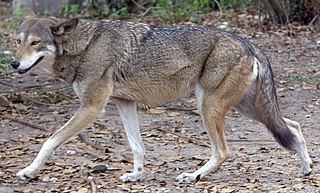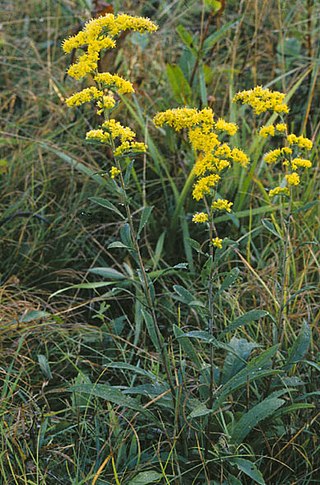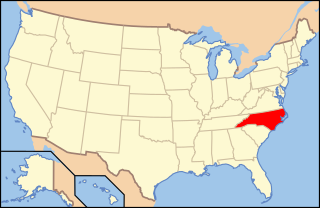
The Carolina parakeet, or Carolina conure, is an extinct species of small green neotropical parrot with a bright yellow head, reddish orange face, and pale beak that was native to the Eastern, Midwest, and Plains states of the United States. It was the only indigenous parrot within its range, and one of only three parrot species native to the United States. The others are the thick-billed parrot, now extirpated, and the green parakeet, still present in Texas; a fourth parrot species, the red-crowned amazon, is debated. It was called puzzi la née or pot pot chee by the Seminole and kelinky in Chickasaw. Though formerly prevalent within its range, the bird had become rare by the middle of the 19th century. The last confirmed sighting in the wild was of the C. c. ludovicianus subspecies in 1910. The last known specimen, a male named Incas, perished in captivity at the Cincinnati Zoo in 1918, and the species was declared extinct in 1939.

North Carolina is a state in the Southeastern region of the United States. It is bordered by Virginia to the north, the Atlantic Ocean to the east, South Carolina to the south, Georgia to the southwest, and Tennessee to the west. The state is the 28th-largest and 9th-most populous of the United States. Along with South Carolina, it makes up the Carolinas region of the East Coast. At the 2020 census, the state had a population of 10,439,388. Raleigh is the state's capital and Charlotte is its most populous city. The Charlotte metropolitan area, with an estimated population of 2,805,115 in 2023, is the most populous metropolitan area in North Carolina, the 22nd-most populous in the United States, and the largest banking center in the nation after New York City. The Research Triangle, with an estimated population of 2,368,947 in 2023, is the second-most populous combined metropolitan area in the state, 31st-most populous in the United States, and is home to the largest research park in the United States, Research Triangle Park.

The red wolf is a canine native to the southeastern United States. Its size is intermediate between the coyote and gray wolf.

Trillium is a genus of about fifty flowering plant species in the family Melanthiaceae. Trillium species are native to temperate regions of North America and Asia, with the greatest diversity of species found in the southern Appalachian Mountains in the southeastern United States.

The Appalachian Mountains, often called the Appalachians, are a mountain range in eastern to northeastern North America. The term "Appalachian" refers to several different regions associated with the mountain range, and its surrounding terrain. The general definition used is one followed by the United States Geological Survey and the Geological Survey of Canada to describe the respective countries' physiographic regions. The U.S. uses the term Appalachian Highlands and Canada uses the term Appalachian Uplands; the Appalachian Mountains are not synonymous with the Appalachian Plateau, which is one of the provinces of the Appalachian Highlands.

Azaleas are flowering shrubs in the genus Rhododendron, particularly the former sections Tsutsusi (evergreen) and Pentanthera (deciduous). Azaleas bloom in the spring, their flowers often lasting several weeks. Shade tolerant, they prefer living near or under trees. They are part of the family Ericaceae.

Wolf spiders are members of the family Lycosidae, named for their robust and agile hunting skills and excellent eyesight. They live mostly in solitude, hunt alone, and usually do not spin webs. Some are opportunistic hunters, pouncing upon prey as they find it or chasing it over short distances; others wait for passing prey in or near the mouth of a burrow. Wolf spiders resemble nursery web spiders, but wolf spiders carry their egg sacs by attaching them to their spinnerets, while the Pisauridae carry their egg sacs with their chelicerae and pedipalps. Two of the wolf spider's eight eyes are large and prominent; this distinguishes them from nursery web spiders, whose eyes are all of roughly equal size. This can also help distinguish them from the similar-looking grass spiders.

The Venus flytrap is a carnivorous plant native to the temperate and subtropical wetlands of North Carolina and South Carolina, on the East Coast of the United States. Although various modern hybrids have been created in cultivation, D. muscipula is the only species of the monotypic genus Dionaea. It is closely related to the waterwheel plant and the cosmopolitan sundews (Drosera), all of which belong to the family Droseraceae. Dionaea catches its prey—chiefly insects and arachnids—with a "jaw"-like clamping structure, which is formed by the terminal portion of each of the plant's leaves; when an insect makes contact with the open leaves, vibrations from the prey's movements ultimately trigger the "jaws" to shut via tiny hairs on their inner surfaces. Additionally, when an insect or spider touches one of these hairs, the trap prepares to close, only fully enclosing the prey if a second hair is contacted within (approximately) twenty seconds of the first contact. Triggers may occur as quickly as 1⁄10 of a second from initial contact.

Goldenrod is a common name for many species of flowering plants in the sunflower family, Asteraceae, commonly in reference to the genus Solidago.

The longleaf pine is a pine species native to the Southeastern United States, found along the coastal plain from East Texas to southern Virginia, extending into northern and central Florida. In this area it is also known as "yellow pine" or "long leaf yellow pine", although it is properly just one out of a number of species termed yellow pine. It reaches a height of 30–35 m (98–115 ft) and a diameter of 0.7 m (28 in). In the past, before extensive logging, they reportedly grew to 47 m (154 ft) with a diameter of 1.2 m (47 in). The tree is a cultural symbol of the Southern United States, being the official state tree of Alabama. This particular species is one of the eight pine tree species that falls under the "Pine" designation as the state tree of North Carolina.

The Blue Ridge Mountains are a physiographic province of the larger Appalachian Highlands range. The mountain range is located in the Eastern United States and extends 550 miles southwest from southern Pennsylvania through Maryland, West Virginia, Virginia, North Carolina, South Carolina, Tennessee, and Georgia. The province consists of northern and southern physiographic regions, which divide near the Roanoke River gap. To the west of the Blue Ridge, between it and the bulk of the Appalachians, lies the Great Appalachian Valley, bordered on the west by the Ridge and Valley province of the Appalachian range.

The New River is a river which flows through the U.S. states of North Carolina, Virginia, and West Virginia before joining with the Gauley River to form the Kanawha River at the town of Gauley Bridge, West Virginia. Part of the Ohio River watershed, it is about 360 miles (580 km) long.

Helianthus is a genus comprising around 70 species of annual and perennial flowering plants in the daisy family Asteraceae commonly known as sunflowers. Except for three South American species, the species of Helianthus are native to North America and Central America. The best-known species is the common sunflower. This and other species, notably Jerusalem artichoke, are cultivated in temperate regions and some tropical regions, as food crops for humans, cattle, and poultry, and as ornamental plants. The species H. annuus typically grows during the summer and into early fall, with the peak growth season being mid-summer.

The Sandhills or Carolina Sandhills is a 10-35 mi wide physiographic region within the U.S. Atlantic Coastal Plain province, along the updip (inland) margin of this province in the states of North Carolina, South Carolina, and Georgia. The extent of the Carolina Sandhills is shown in maps of the ecoregions of North Carolina, South Carolina, and Georgia.

The Seminole bat is a species of bat in the family Vespertilionidae.

Sabal palmetto, also known as cabbage palm, cabbage palmetto, sabal palm, blue palmetto, Carolina palmetto, common palmetto, Garfield's tree, and swamp cabbage, is one of 15 species of palmetto palm. It is native to the far Southeast United States, the Yucatán Peninsula in Mexico, the West Indies, and the Bahamas.

Currituck Banks North Carolina National Estuarine Research Reserve is a component site of the North Carolina National Estuarine Research Reserve on the Currituck Banks, north of Corolla, North Carolina. Currituck Banks is one of three original National Estuarine Research Reserve sites dedicated by NOAA in 1985. The reserve encompasses 965 acres of varied habitat and is bordered by the Currituck Sound. The Currituck banks are part of a 70-mile long barrier spit that extends from Virginia Beach to Oregon Inlet.

Paleontology in North Carolina refers to paleontological research occurring within or conducted by people from the U.S. state of North Carolina. Fossils are common in North Carolina. According to author Rufus Johnson, "almost every major river and creek east of Interstate 95 has exposures where fossils can be found". The fossil record of North Carolina spans from Eocambrian remains that are 600 million years old, to the Pleistocene 10,000 years ago.
Chedighaii is an extinct genus of marine bothremydid side-necked turtle that inhabited eastern and south-central North America during the Campanian stage of the Late Cretaceous. It is known from two species C. hutchisoni and C. barberi. The genus name is derived from ch’ééh digháhii, the Navajo word for turtle.

















